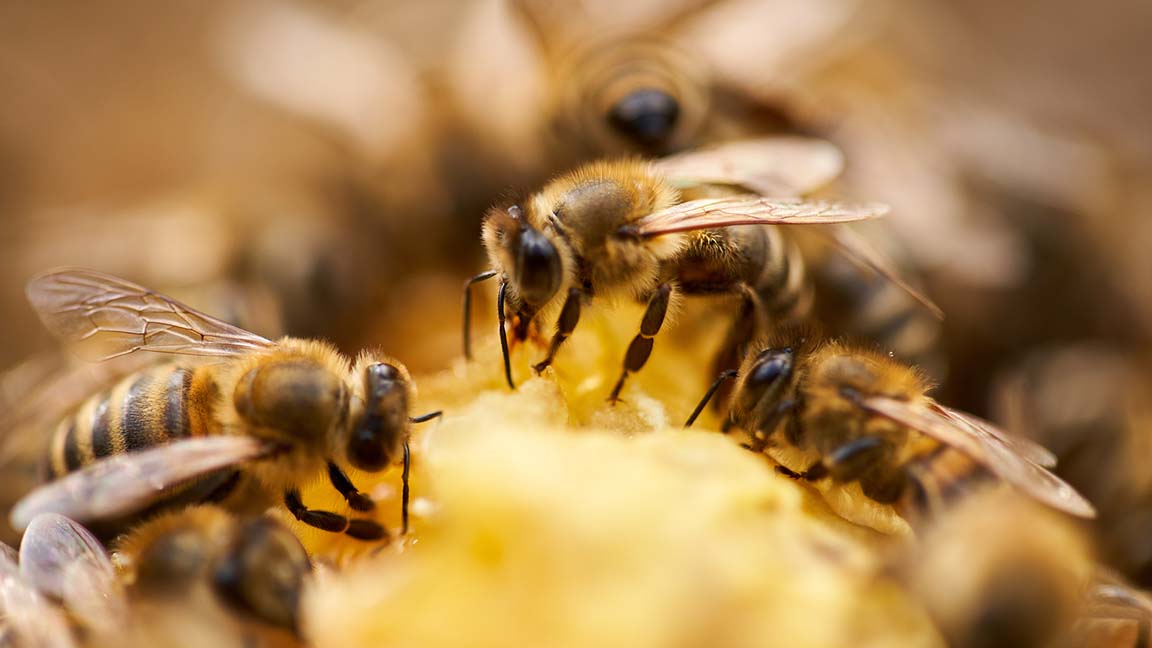With spring underway, bees are active in their search for the sweet nectar found in clover and flowers. Disturb their feast and you could find yourself on the other side of a venomous sting.
The sting of a bee, wasp, yellow jacket and hornet (and fire ant) can be quite painful, and in a small number of people can cause a life-threatening reaction.
“Bees are much more active in warmer weather,” says Dr. William Richmond, director of emergency services at Tidelands Health. “Fortunately, most people who get stung don’t need to come to the ER because most just have a local reaction. However, 3 percent can have an anaphylactic reaction.”
Although reactions to a bee sting can vary from person to person, knowing what to look for can mean the difference between life or death if the person stung is allergic or stung numerous times.
After a sting, most people will experience localized pain, some swelling, itching and redness. Swelling sometimes will extend to an area around the immediate area of the sting, such as a swollen leg when stung on the foot, explains Dr. Richmond. Those types of localized reactions will typically resolve over a couple of days without medical care.
However, people who are allergic or suffer multiple stings simultaneously can develop anaphylaxis, a more serious response that may require emergency care.
“An anaphylactic reaction can be fatal,” Dr. Richmond says. “About half of them are fatal with 30 minutes, and 75 percent are fatal within 45 minutes if left untreated.”
Anaphylaxis is typically treated using epinephrine, which reverses the effects of the venom by opening the airways, counteracting a dropping blood pressure and reducing swelling. Most people who know they’re allergic carry an epinephrine injector they can self-administer after a sting. About 2 million Americans have allergies to stinging insects, according to the Asthma and Allergy Foundation of America.
If you’ve been stung and experience any of these symptoms, call 911 immediately:
- Trouble breathing, swallowing and wheezing
- Swelling of face, lips, tongue, mouth or throat
- Red, itchy rash that extends beyond the site of the sting
- Rapid heartbeat and pulse
- Blood pressure dropping
- Dizziness
- Diarrhea or nausea
“If there’s any question, it’s always the best to call 911 and get to the hospital,” Dr. Richmond says.
Parents of young children should know the signs of a severe reaction, especially if they’re unsure whether their child is allergic to a stinging bug. Most people don’t know they’re allergic until they’re stung.
About 50-60 people die each year from a stinging insect, many as a result of multiple stings in the case of a swarm attack.
“Unless you’re allergic, people rarely die from two, three or four stings,” Dr. Richmond says. “You can have deaths from up to 30 wasp or 50-60 honeybee stings. It’s the venom load that can be life threatening.”
To reduce the venom load from a bee sting, remove the stinger as quickly as possible using your fingernail or a flat-edged instrument like a credit card. Avoid squeezing the site, which can redistribute the venom.
“Brush it off or do what you can to get it off quickly,” Dr. Richmond says. “If not, the stinger continues to inject venom for up to a minute. If you can remove it, that will limit the amount of toxin being injected into your body.”
If you experience a mild to moderate reaction to a sting:
- Wash the area with soap and water.
- Apply an antiseptic spray.
- Use a soothing cream or ointment and cover the area with a bandage.
- Apply ice or a cold compress to reduce swelling.
- Use an over-the-counter antihistamine to ease itching.
- Take ibuprofen to reduce pain and inflammation.
If you experience a severe reaction to a sting, call 911 immediately.
If you are allergic to bug stings and have experienced anaphylaxis, it’s a good idea to speak with your physician about allergy testing and immunotherapy, Dr. Richmond says.
“Getting allergy shots can decrease your chances of having a severe reaction,” he adds. “With bees, the key is not to take any chances. If there’s any question you may be having an allergic reaction, seek medical care. And if you’ve had a serious reaction before, carry your epinephrine injector with you at all times and have two or three placed in strategic locations because you never know when you might need them.”
